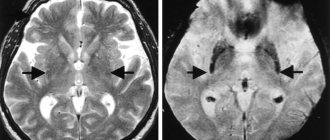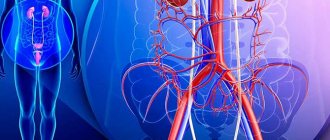Every 10 elderly people are diagnosed with dementia. Moreover, every 10 years this figure doubles as the number of elderly people grows. And in 50%-70% of cases it is associated with Alzheimer's disease1.
Alzheimer's disease is a chronic neurodegenerative disease characterized by the death of nerve cells in the brain. Since the neurons of the brain are destroyed, patients are characterized by disorders of memory and thinking, attention, speech, orientation in space, the ability to make decisions, and perform usual work duties. Mental disorders are expressed by anxiety and depression. In the later stages, intellect and mental activity disintegrate, and in general, motor disorders develop.
The disease is progressing all the time. On average, death occurs 8 years after diagnosis1. A medicine that can prevent the death of brain cells has not yet been invented, so the goal of treatment is to combat symptoms and increase life expectancy.
Kinds
The forms of the disease are divided according to age:
- with early (before 65 years) onset
- with late (after 65 years) onset
- atypical Alzheimer's disease (mixed type with vascular or other problems)
They differ not only in the age of onset of the disease. Often the timing of the onset of the first symptoms of Alzheimer's disease cannot be accurately determined, they are so invisible. It is important that the forms of Alzheimer's disease have significant differences in the clinical picture and features of the development of the disease, this allows for more accurate diagnosis.
Preventive actions
Preventive, that is, prophylactic measures, can slow down the development of the disease, but whether it can be prevented, scientists do not have a consensus.
To prevent Alzheimer's disease, it is recommended for older people to:
- lead an active life;
- be interested in new electronics;
- master the computer and use of gadgets;
- stimulate brain activity, read, find new hobbies.
Moderate physical exercise, especially outdoors, is very beneficial. At this time, the blood is saturated with oxygen, the brain structures begin to function better, which reduces the risk of vascular disorders.
When cardiovascular and pulmonary diseases are detected, it is important to treat them promptly. Normal organ function prevents the development of Alzheimer's type dementia.
Symptoms and signs
Symptoms and signs of Alzheimer's disease vary at different stages of the disease. First, short-term memory and the ability to remember new things are lost. The same questions are asked many times. Then abstract thinking is lost and long-term memory begins to suffer. Words, concepts, names of grandchildren, events of recent years are forgotten. Work tasks become impossible, writing and calculations are disrupted.
In older people, signs of Alzheimer's disease may include problems with mental calculations, forgetfulness, difficulty finding the right words, and handwriting becoming less legible.
In rare cases, the problem occurs before the age of 30, when there is a hereditary predisposition, as well as provoking factors such as diabetes mellitus and traumatic brain injuries. The difference is that the progression is much faster. First, short-term memory is impaired, then it becomes difficult to explain something. It is not always possible to start treatment on time, since Alzheimer's disease at a young age is easily confused with psychiatric diseases.
In women, the disease is more common and develops faster. Damage to nerve cells leads to changes in behavior: passivity, apathy, tearfulness, and frequent mood swings. Since the onset of the disease often coincides with menopause, it is not easy to determine that these are manifestations of Alzheimer's disease.
In men, the disease is diagnosed less frequently. Initial symptoms remain unnoticeable for a long time, and symptoms develop slowly.
Predementia
This stage of the disease is not characterized by any pronounced disorders. Some patients may experience subtle cognitive difficulties. Typically, at least 7-8 years pass from the onset of this stage to the appearance of more pronounced symptoms of the disease. Among the most common disorders during this period of the disease are memory impairment (the patient is unable to remember recent events) and difficulties with memorization. In addition, the patient gradually becomes unable to concentrate on anything and has difficulty planning and abstract thinking. Typically, all these disorders are perceived by the patient and his loved ones as a result of aging.
Diagnostics
Tests
A neurologist or psychiatrist can make the correct diagnosis and identify the initial symptoms of Alzheimer's disease.
Diagnosis of Alzheimer's disease must be comprehensive.
In addition to the usual questioning and examination, psychological tests are used that identify problems with memory and cognitive functions at an early stage.
Examples of tasks:
- draw a clock face with a given time (for example 10.45);
- draw a clock face;
- reproduce a geometric figure from a picture;
- rewrite the sentence;
- read cards with words and then repeat;
- find the given symbol/number in the picture.
It is advisable for every elderly person to undergo testing in order to identify problems at an early stage.
Neuroimaging
Magnetic resonance imaging (MRI), computed tomography (CT), and positron emission tomography (PET) are used. These methods help to see changes in the structure of the brain. The doctor evaluates atrophic changes, the size of the grooves, gyri, and affected areas. Modern research helps to exclude other diseases, such as strokes, tumors, and prescribe the correct treatment.
Genetic testing
Helps to identify a disease with an early onset and aggressive course. Used in the diagnosis of familial forms of Alzheimer's disease.
Laboratory research
Allows you to exclude other diseases with similar symptoms of dementia. An analysis of liver enzymes, assessment of thyroid function, levels of B vitamins, folate, tests for syphilis, HIV, and urine testing are required. Examination of cerebrospinal fluid if a tumor or infection of the central nervous system is suspected.
A detailed analysis and history of the development of symptoms is important; this can increase the accuracy of diagnosing asthma to 90–95%2. It is important to note any new signs in the patient’s behavior. Sometimes this information plays a more important role compared to even CT/MRI studies.
Brain development during evolution.
The development of the brain proceeded in the direction of a gradual increase in its size (Fig. 10). Typically, the increase occurred simultaneously with an increase in the weight of the animal. This is logical, because the mass of the system that needs to be managed has increased. At the same time, there were exceptions to this proportionality, in whom the brain developed more strongly. Among them are humans, monkeys and dolphins (Fig. 11). Since it was not possible to directly assess the influence of brain size on cognitive abilities, they came up with a special coefficient, which was called “Coefficient. encephalization." In humans it is about 7.8-8.0, in its closest competitors - bottlenose dolphins - 5.3, in monkeys - 4.8-5.0.
Figure 10. Increase in brain size in animals. Brain mass and number of neurons are indicated.
Figure 11. Proportionality of increase in brain mass to body weight. Figure 12. Encephalization coefficient. M is body mass in grams, m is brain mass in grams.
We see that humans have a relatively large brain. This provides a huge advantage in the ability to adapt to changing environmental conditions. At the same time, the price of owning such a brain is extremely high. There are at least three problems.
- Energy-consuming organ.
The brain of a modern adult is only 1/50 of the total body weight, but consumes up to 1/5 of its total energy. Operating costs for the brain under conditions of a resting organism, calculated per unit mass, are eight to ten times higher than costs for muscles; and approximately 3/4 of all this energy is spent on the work of specialized brain cells - neurons that generate our thoughts and feelings. This disadvantage can be dealt with quite easily. It is enough to provide the required level of nutrition.
2. Brain size is limited by birth method. This problem is complex. Nature had to find a balance between brain size and a high probability of positive pregnancy resolution. Currently, the brain volume of a newborn is 341 cm^3 +-5%. (Fig. 13) and in some cases even this volume is too large. Previously, natural stabilizing selection acted in such situations. Now doctors are resorting to surgery. Unfortunately the balance is not perfect. Childbirth does not always go smoothly and the brain in this volume is not full, which causes the appearance of the third problem.
Figure 13. The size of the human brain on the left is an adult brain 1400 cm^3, on the right the brain of a newborn is 341 cm^3.3. Long reproductive cycle. During the formation of the brain, the child needs parental care, which determines a very long reproductive cycle.
Figure 14. Changes in brain size and mass during development.
Stages of the disease
Alzheimer's disease develops gradually, not all at once.
"Doubtful" dementia
The early stage may not be noticeable to others and can only be revealed through detailed neurocognitive tests. This stage is characterized by mild forgetfulness and inaccurate memories. You can also notice difficulties in determining the similarities and differences between objects and events. Abstract thinking and planning are difficult. In ordinary life, we won’t even notice this, so a person manages to hide or compensate for small problems in communication and work.
Mild dementia
Memory impairments become more obvious, especially for recent events. A person can get lost and forget his usual route. Confuse the order of events. Cannot find commonality or compare two objects or events. The ability to do calculations and write letters is lost. Such a person will speak slowly, use simple words, sometimes they may not be enough for reasoning. At the same time, the usual self-care activities are preserved.
Changes in behavior are already possible in the form of petty nonsense that someone is stealing from him, oppressing him, or causing harm. The state may be depressed due to the understanding that “something is wrong” with the head.
Moderate dementia
At this stage, learning new information becomes impossible. A person gets confused in the order of important events in his own life. He ceases to understand where he is and what time it is. The stock of memory and knowledge is constantly decreasing, they are becoming more and more inaccurate and blurred. Speech is impaired, first the ability to write is lost, then to read.
A “time shift” into the past may occur in consciousness. A person thinks and perceives everything as if he were not living today, but in a time that he still remembers. This may be accompanied by energy and a persistent desire for pseudo-activity.
Severe dementia
A person completely loses touch with reality, he not only does not orient himself in time and space, but also loses the idea of himself, his personality. Such a person cannot live independently. Attention is very weak. Reactions are more template, “automatic”. At the same time, emotional contact is preserved; an example would be “imaginary” conversations, when the patient tries to maintain a conversation, but its content is completely meaningless. The mood can change from aggression to apathy.
The patient is weakened psychologically and physically. Activity decreases sharply, complications develop in the form of bedsores, pneumonia, which leads to death.
Severe dementia
This is the last stage of the disease, at which the ability to self-care is completely lost. Therefore, patients need constant supervision: they need to be spoon-fed, and they often experience urinary incontinence.
Patients also lose the ability to speak normally, their gait is impaired, so they cannot walk without assistance. In the future, patients cannot smile, sit, hold their head up, or swallow normally. The death of the patient in most cases occurs due to infection of the body against the background of its weakening and exhaustion.
Causes
There are many theories about the occurrence of Alzheimer's disease, but the exact cause has not been established.
The exact cause is still not determined.
Lack of acetylcholine. It was thought that the disease might be related to a deficiency of this neurotransmitter. But it turned out that the administration of this substance does not improve the condition of patients.
Amyloid theory. Amyloid protein is deposited in brain tissue and is detected on CT/MRI in the form of plaques. First, the transmission of nerve impulses is disrupted, then the brain cells die. It can take 10-15 years from the appearance of the first plaques to mild forgetfulness3.
Tau theory. Structural abnormalities occur in the structure of tau protein, which is contained in nerve cells. This disrupts the transmission of nerve impulses, and ultimately leads to the death of the neuron. These disorders are usually detected after the onset of amyloid plaques.
Genetic predisposition becomes the cause in only 10% of cases1.
Genetic predisposition
Alzheimer's disease is considered a multifactorial disease, the leading role in the development of which is played by genetic defects. Scientists have also identified cases of familial forms of the pathology, which are usually extremely rare and appear in patients under 65 years of age. Familial forms of the disease are transmitted in an autosomal dominant manner. Namely, this mechanism of disease development is characterized by blocking of the normal gene by the pathological gene that the newborn received from the sick parent. The probability of transmitting a pathological gene is 50%.
Scientists have discovered three pathological genes that can cause the disease. Most often, Alzheimer's disease occurs in patients who have a defect in a gene located on chromosome 14. It has been proven that of all cases of family etiology of the disease, this defect is considered the most common (60-70% of all cases of the disease). The disease can also occur due to defects of chromosomes 1 and 21.
Treatment
Today, treatment for Alzheimer's disease is aimed at combating symptoms and improving the quality of life of patients.
It is important to start treatment in a timely manner!
Cholinesterase inhibitors. The following drugs are used to combat acetylcholine deficiency:
- acetylcholine precursors (citicoline, choline alfoscerate);
- promoting the release of acetylcholine in the synapse (ipidacrine);
- capable of enhancing the effect of acetylcholine (galantamine);
- blocking the breakdown of acetylcholine (rivastigmine, donepezil, galantamine, ipidacrine);
Memantine is the only drug recommended worldwide for the treatment of dementia due to Alzheimer's disease. Can be used for moderate to severe cases.
Cerebrolysin – believed to increase brain cell viability.
All drugs can have significant side effects and have strict contraindications, so the dosage regimen is selected individually by the doctor. It is also impossible to supplement the treatment regimen with nootropics in order to support the brain on your own.











